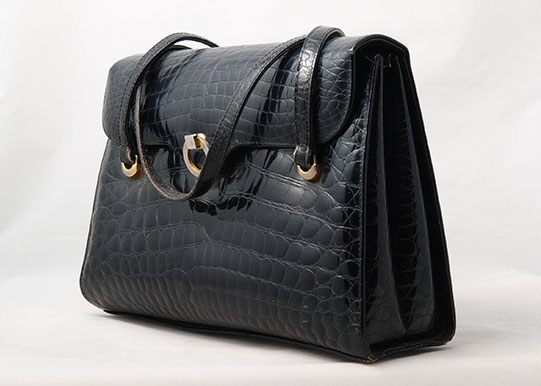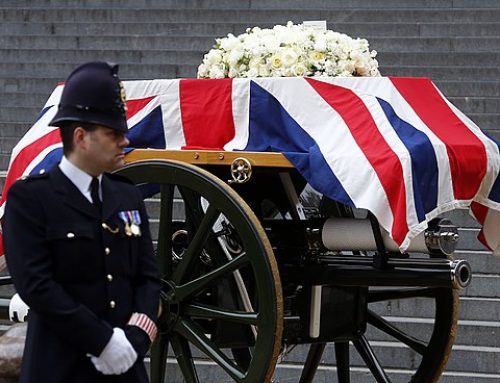Margaret Thatcher wielded her handbags as potent symbols of her unyielding authority, transforming them into emblems of her “Iron Lady” persona. These structured, dark-colored bags, often from luxury brands such as Asprey and Launer, were more than accessories; they were tools of power, integral to her image as a formidable leader. The term “handbagging” emerged to describe her assertive, often ruthless style in political confrontations, a nod to how she brandished her handbag like a weapon. As Victoria Moss notes in British Vogue, Thatcher’s handbags were her “most important piece of weaponry,” elevating her from a grocer’s daughter to an “armour-coated power player.”
Thatcher’s bags, typically boxy and black, were a constant presence, whether entering Downing Street, meeting Ronald Reagan, or navigating Cabinet disputes. Their sharp angles and stiff leather, often Launer’s Bellini or Adagio models, mirrored her resolute demeanor. During tense negotiations, placing her handbag on the table signaled dominance, intimidating colleagues. Norman Tebbit, a key ally, noted that ministers needed to counter the “advice” Thatcher carried in her bag, often laced with quotes from Lincoln or Hayek. Her handbags became so iconic that they inspired a Spitting Image sketch and a gift from U.S. Secretary of State George Shultz—a replica bag filled with her pithiest quotes.
The cultural weight of Thatcher’s handbags endures. A Launer bag sold at auction in 2015 for £82,500, reflecting their historical value. Another, a grey mock-crocodile Asprey handbag (archive reference THCR 9/1/1), is displayed at Churchill College, Cambridge, in the Margaret Thatcher Archive. Used during pivotal moments such as her 1988 meetings with Lech Walesa in Poland and her Bruges Speech, this bag was a daily fixture at Downing Street. In 2008, Thatcher provided a handwritten card detailing its provenance, donating items like handkerchiefs and lipstick once carried inside, offering a personal glimpse into her life. The Churchill Archives Centre preserves this bag as a symbol of her political might, underscoring how Thatcher used style to project power.
Thatcher’s handbags influenced fashion, with Launer reporting a 53% sales spike for her preferred styles after her 2013 death. They bridged femininity and authority, aligning with her tailored suits and pearls. Both functional—carrying crucial documents—and symbolic, they embodied her defense of principles, as she quipped: “I am obstinate in defending our liberties and our law. That is why I carry a big handbag.” Her handbags remain a testament to her indelible image in a male-dominated political arena.






Leave A Comment